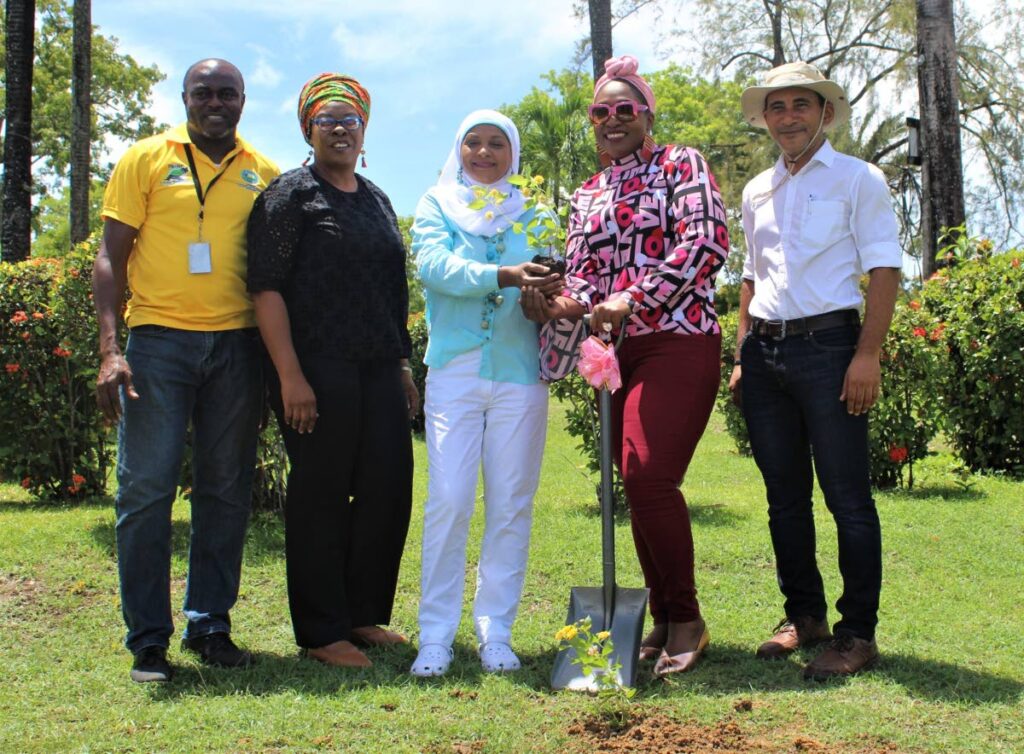Let the flowers bloom again

How often when a butterfly floats past have you heard someone say: “You know how long I have not seen a butterfly?” or perhaps “I think there were more butterflies around when I was a child.”
These passing comments and articulated observations seem to be more commonplace in urban settings but have also been made in rural areas. It is interesting that the questions and statements often do not get responses or reactions, but instead remain as rhetorical questions or passing mentions that disappear along the wind currents. Real or apparent, these thoughts require attention, and more importantly a call to action; butterflies and other pollinator species are often overlooked and taken for granted and with that, their important work, said a media release from BES-Net TT.
What is causing the disappearance?
In a 2023 research article authored by Janousek et al published in the Proceedings of the National Academy of Sciences (PNAS), the authors cite a global decline of insect pollinators, notably, common, yet understudied species which are quietly disappearing. The article noted that for western North America, where a study was conducted, increasing temperatures due to climate change and pesticides including neonicotinoids had the greatest negative influence on pollinator populations.
Changing climatic conditions may impact directly on survival rates of pollinators due to sub-optimal conditions for life and typical reproductive cycles. Indirectly, the temperature and moisture changes seen as climate impacts, also influence flowering patterns of plants which in turn affect foraging ability of the pollinators that visit flowers for nectar and pollen.
Pollinator gardens to provide a solution
In an article titled Climate-resilient pollinator gardens, published by the American Planning Association, pollinator garden installations are recommended for open unused spaces in communities, for greening of communities and for green infrastructure (GI) projects. The introduction of plants in these spaces assists in stormwater management by increasing infiltration to the soils and reduces island heat effect through heat absorption. The obvious benefits of increasing oxygen supply, providing habitats for wildlife and food for pollinator species are also underscored.

The BES-Net TT project has been advocating for the use of native plants in pollinator gardens, as these support native insects and pollinator species. In a global assessment of biodiversity and ecosystem services (IPBES, 2019) it was estimated that as many as one million plant and animal species are under threat of human extinction. It is therefore a good action to maintain and conserve native plant species through the development of pollinator gardens.
Where do we have them?
In Trinidad and Tobago there is a growing interest in pollinator gardens. For the most part, these gardens are being developed to provide safe havens and feeding niches for pollinators, but also to aesthetically enhance spaces by encouraging specific types of animals, such as butterflies and hummingbirds.
More recently, there has been press coverage of the Garden With Wings project undertaken by the Friends of the Botanical Gardens of TT at the Royal Botanical Gardens in Port of Spain, which encourages butterfly species. Students of Brazil Secondary School some years ago created a hummingbird garden and have successfully recorded at least seven species of hummingbirds in the space.

The Pointe-a-Pierre Wild Fowl Trust with volunteer assistance also installed a pollinator garden which includes plants that encourage growth in populations of the Monarch butterfly and which serves to educate the public on the importance of biodiversity conservation.
References
https://www.pnas.org/doi/10.1073/pnas.2211223120 Janousek, W. M., Douglas, M. R. and Graves, T. A. (2023) Recent and future declines of a historically widespread pollinator linked to climate, land cover, and pesticides. 120 (5) e2211223120 PNAS.
https://www.planning.org/pas/quicknotes/96/climate-resilient-pollinator-gardens
IPBES (2019): Summary for policymakers of the global assessment report on biodiversity and ecosystem services of the Intergovernmental Science-Policy Platform on Biodiversity and Ecosystem Services. S. Díaz, et al. (eds.). IPBES secretariat, Bonn, Germany. 56 pages. https://doi.org/10.5281/zenodo.3553579
https://www.youtube.com/@bes-net_tt/videos
More info
http://www.biodiversity.gov.tt/index.php/bes-net.html
http://www.biodiversity.gov.tt/index.php/bes-net.html
Facebook: https://www.facebook.com/besnet.tt/ Instagram: https://www.instagram.com/besnet.tt/?hl=en
YouTube: https://www.youtube.com/@bes-net_tt/videos
TikTok: https://www.tiktok.com/@besnet.tt


Comments
"Let the flowers bloom again"